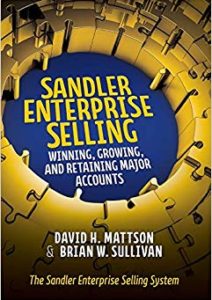We’ve all faced the challenge. Our new major account prospect feels good about our solution as it directly addresses their needs and pains. We’ve gained significant competitive advantage over the competitors we faced in the pursuit but they linger in the wings still, the deal not yet consummated. For the prospect is not quite ready to sign as an element of doubt hangs in the air. We’ve strategized as a team and reviewed with the account what we believe is the answer to their problems – our solution. But still, no ink. Do we cut our price, surrendering precious margin to gain a commitment to begin? Perish the thought. And all of a sudden, the prospect intimates that they’d be willing to consider an up-front engagement in which we remove all doubt as a test of our performance. Of course, such engagements can be helpful when the cost or scope of a deal might be intimidating to a prospect. Or when the validation of a proposed solution’s effectiveness eases a prospect’s anxiety. Viable options, for sure, but ones that must be very carefully contemplated.
Think about it. Given the complexity of major account solutions, introductory engagements are often utilized. Pilot projects give prospects comfort, proving a proposal’s effectiveness through delivering on a part of the solution. Prototypes simulate full-blown initiatives and trials are used as small-scale projects, verifying solutions and often weeding out flaws in advance of full implementations. Proofs-of-Concept (POC’s) preview larger solutions through smaller, limited exercises, providing insights to the client into expertise and delivery capability. And Minimum Viable Products (MVP’s) are no-frills implementations, impacting minimal functionality while still creating value, sparking user engagement, and generating valuable insights. Of course, there are other ways to “test drive” in the major account world and we also see similar introductory vehicles in selling to small and medium-sized businesses. I grew up in selling at Xerox and we routinely utilized trials to prove capability, a practice still quite popular today.
There’s no question that these variations on a theme can help win and close business. And if major deals truly depend on “Prove it or Lose it”, these vehicles often provide the required verification, sealing the victories.
All that said, Beware!
But why? Placing bets on introductory engagements, regardless of structure, presents a minefield of risk. When you start such initiatives, be assured that your new client’s organization is very aware that their commitment to you is short-term. From the C-Level to the actual users, their relationships with you in this strange time are much looser than if you had secured the full business. Their access, help and guidance all come at arm’s length. And given that the full prize remains in doubt, organizational contacts who favor competitors might not directly sabotage your efforts but will likely be less than forthright in their support. And, BTW, they’ll do this while confidentially keeping their preferred partner well informed of your progress or lack thereof. And while your team is laboring to deliver value, they’ll be evaluated in the hot glare of the spotlight. Every action will be tracked, with mistakes noted by the hovering presence of contracts and legal team members. High stakes? For sure……leading to high costs. For introductory engagements always bring significant expense. Your superhuman efforts to overdeliver to guarantee the follow-on win will dictate overspending in money, effort and time. And since you assigned your “A” Team to this critical initiative, a real-time debt will be due. As the expense river flows, so will the opportunity costs.
The minefield also presents the stifling danger of free consulting. Exhibiting your creativity and subject matter ideas to impress often expose far too much. Seemingly successful initiatives can wrap up with well-educated clients positioned to forge ahead on the path you outlined in great detail. On their own, without you. Or even worse, partnered with one of those competitors. Or perhaps you performed so well that the client wants to award you the big deal, but at a reduced price. After all, you made it look easy. Beware, indeed.
So, what to do? First, be certain that your preparation is comprehensive and that you follow an effective process in building your solution. Your Go/No-Go decision must verify that both the account and the opportunity are right for you, clearly fitting your profile. Then, when accounts suggest trials, POC’s and pilots after seeking bids for full engagements, stand your ground, within every length of business and selling sense. If some type of initial engagement absolutely must be delivered for legitimate reasons like the timing of funding or mandatory verification, proceed only after gaining contractual agreement on the risky initiative’s clearly-defined end point. And only after making the reasoned business case for proceeding in full partnership from the beginning, showing deserved confidence in your highly effective solution. And only if you must. Of course, be realistic, but don’t cut your organization, your solution or your profits short. Be confident that your work has earned the right to secure the full deal on which you proposed.












Comments